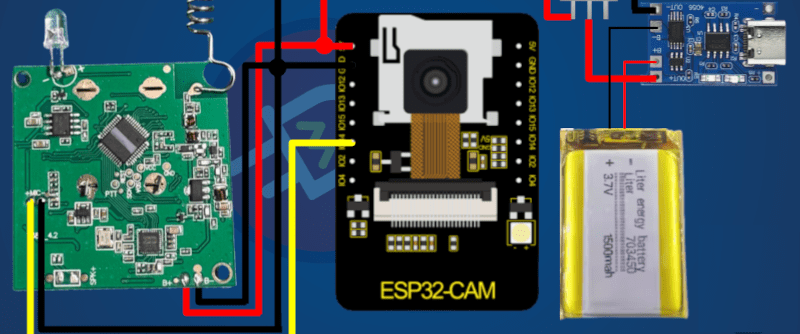How do you get images downlinked from 30 km up? Hams might guess SSTV — slow scan TV — and that’s the approach [desafloinventor] took. If you haven’t seen it before (no pun intended), SSTV is a way to send images over radio at a low frame rate. Usually, you get about 30 seconds to 2 minutes per frame.
The setup uses regular, cheap walkie-talkies for the radio portion on a band that doesn’t require a license. The ESP32-CAM provides the processing and image acquisition. Normally, you don’t think of these radios as having a lot of range, but if the transmitter is high, the range will be very good. The project steals the board out of the radio to save weight. You only fly the PC board, not the entire radio.
If you are familiar with SSTV, the ESP-32 code encodes the image using Martin 1. This color format was developed by a ham named [Martin] (G3OQD). A 320×256 image takes nearly two minutes to send. The balloon system sends every 10 minutes, so that’s not a problem.
Of course, this technique will work anywhere you want to send images over a communication medium. Hams use these SSTV formats even on noisy shortwave frequencies, so the protocols are robust.
Hams used SSTV to trade memes way before the Internet. Need to receive SSTV? No problem.
















Cool project. I see that they use my code from this post:
https://hackaday.com/2022/11/20/this-standalone-camera-gets-the-picture-through-with-sstv/
Happy flying!
And I was wondering how one could implement all of this so fast…
Thank you for lending your shoulders to stand on.
I doubt that this works for many PMR446 radios. Do they allow you to key up for 2 minutes on end?
Says in the link, step 5, to disable the timeout.
It’s a neat project, I could imagine it being used by a licensed Ham with one of the NiceRF SA8x8 modules
Wenet is very used protocol amongst HAB hobbyist:
https://github.com/projecthorus/wenet
I wonder how far you’d get with a tracking antenna and WiFi? – Much prefer a live feed.
Violates the regs:
§ 95.533 Prohibited FRS uses.
FRS units must not be used for one-way communications other than those listed in § 95.531(b). Initial transmissions to establish two-way communications and data transmissions listed in § 95.531(a) are not considered to be one-way communications for the purposes of this section.
What makes you think this was built to operate in the US?
We can always reprogram the radio for use in a US amateur radio band.
Problem solved, licensing is as easy as a simple test and filling out a form.
Nice project; another great use for a thorw-away radio.
Correction: Violates the FCC regs in the USA.
Analog video or wi-fi is better.
While you can legally transmit wi-fi over 30km (at least in many countries, check your local regs), it requires a much more directional antenna and is more sensitive to interference than SSTV. Since you can’t control where the balloon goes once you release it, and high altitude winds can be quite strong, maintaining this link is potentially a lot trickier, and the hardware to do it much heavier.
That’s not to say it’s impossible – my understanding is that google’s “project loon” at one point used off-the-shelf ubiquiti wifi radios in their stratospheric balloons – but I wouldn’t say it’s obviously “better”.
Tell me you didn’t understand the problem without telling me you didn’t understand the problem.
There have been a lot of comments like this lately…
What would be the practicalities involved in increasing the data rate by say 10x or 100fold? Would it still work, but only in environments with less ambient radio noise than this system is capable of overcoming?